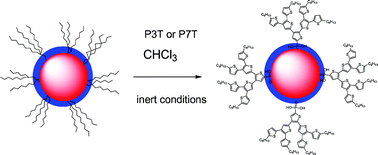Abstract
In this work, the synthesis, characterization, and applications of branched oligothiophene dendrons that act as electroactive

* Corresponding authors
a
Department of Chemistry and Department of Chemical Engineering, University of Houston, Houston, TX, USA
E-mail:
radvincula@uh.edu
Fax: +1 713-743-1755
Tel: +1 713-743-1760
In this work, the synthesis, characterization, and applications of branched oligothiophene dendrons that act as electroactive

 Please wait while we load your content...
Something went wrong. Try again?
Please wait while we load your content...
Something went wrong. Try again?
R. C. Advincula, Dalton Trans., 2006, 2778 DOI: 10.1039/B517601H
To request permission to reproduce material from this article, please go to the Copyright Clearance Center request page.
If you are an author contributing to an RSC publication, you do not need to request permission provided correct acknowledgement is given.
If you are the author of this article, you do not need to request permission to reproduce figures and diagrams provided correct acknowledgement is given. If you want to reproduce the whole article in a third-party publication (excluding your thesis/dissertation for which permission is not required) please go to the Copyright Clearance Center request page.
Read more about how to correctly acknowledge RSC content.
 Fetching data from CrossRef.
Fetching data from CrossRef.
This may take some time to load.
Loading related content
